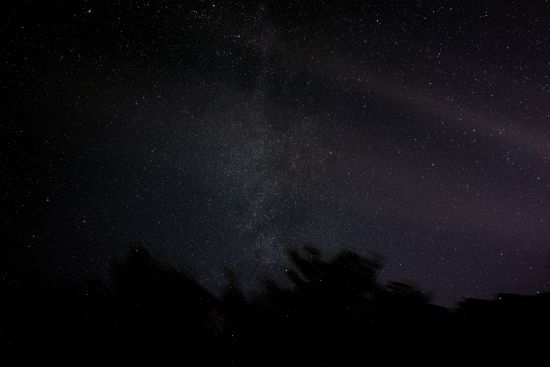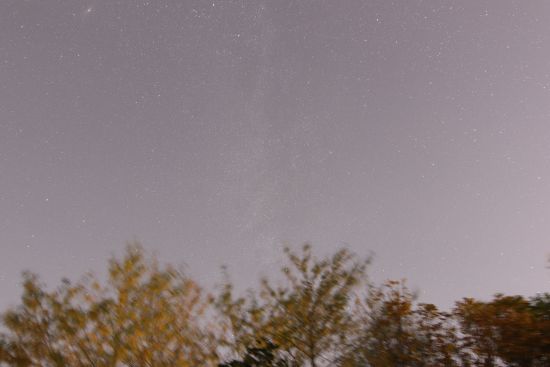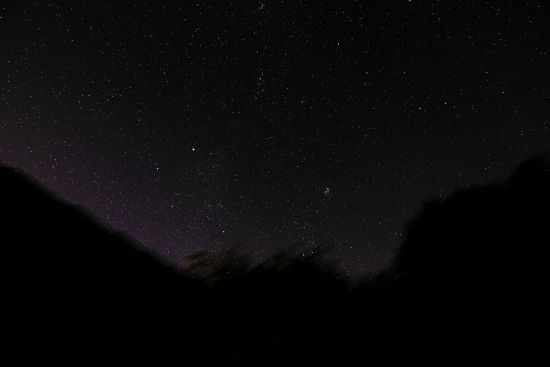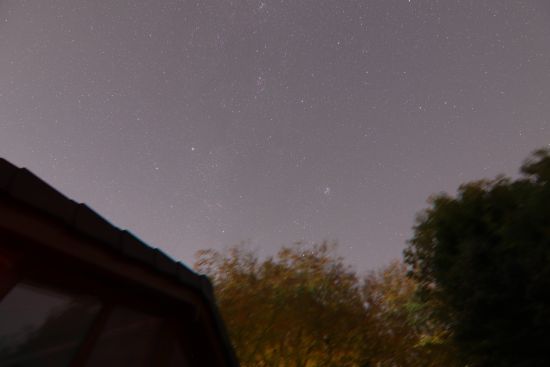Night Sky Images - 04/11/2021
Gear:
- Canon EOS 200D
- Tokina AT-X Pro SD 11-16mm f/2.8 (IF) DX
- Tripod
- Star Adventurer 2i tracking mount (with shutter release cable)
Weather:
- Light cloud (~10%)
Location:
- Garden
Software
- Rawtherapee - RAW file importing, optical correction & image processing
- ASTAP - Image stacking / general astrophotography toolset
- GIMP - RAW/TIF to JPEG, cropping
Images
Not a great image, looking South/West - You can just about make out Deneb (Cygnus) descending below the tree line here. Quite a noisy image - not the best, though looking very closely you can barely make out the tiny form of the Andromeda galaxy at the upper left corner.
 Fig. 1: EOS 200D, Tokina f/2.8 11-16mm. F4.0, 16mm, ISO800, 5x180s
Fig. 1: EOS 200D, Tokina f/2.8 11-16mm. F4.0, 16mm, ISO800, 5x180s  Fig. 2: Single 180s, ISO800 frame taken from unaltered RAW sequence
Fig. 2: Single 180s, ISO800 frame taken from unaltered RAW sequence
Looking East, with Capella (Auriga constellation), Mirfak (Persus) and the Pleaides cluster visible in the centre of the image.
 Fig. 3: EOS 200D, Tokina f/2.8 11-16mm. F4.0, 11mm, ISO800, 5x180s
Fig. 3: EOS 200D, Tokina f/2.8 11-16mm. F4.0, 11mm, ISO800, 5x180s  Fig. 4: Single 180s, ISO800 frame taken from unaltered RAW sequence
Fig. 4: Single 180s, ISO800 frame taken from unaltered RAW sequence
Conclusion
Reducing ISO to 800 and increasing exposure didn't work too well; also the sky wasn't as clear as I thought, with the main tree-line sequence particularly plagued by thin cloud. Next time I'll increase the ISO back up again and reduce the exposures back to 60-120 seconds, with more exposures if possible.
I have a possible location that I can take images from that is within 10 minutes walking distance from the house… it should be subject to less light polution - which, along with the very high angle I need to image from in the garden, is one of the biggest problems here. I'm aiming to try it out the next available (clear skies, dry ground [Ha! In Winter, in the UK?] weekend.